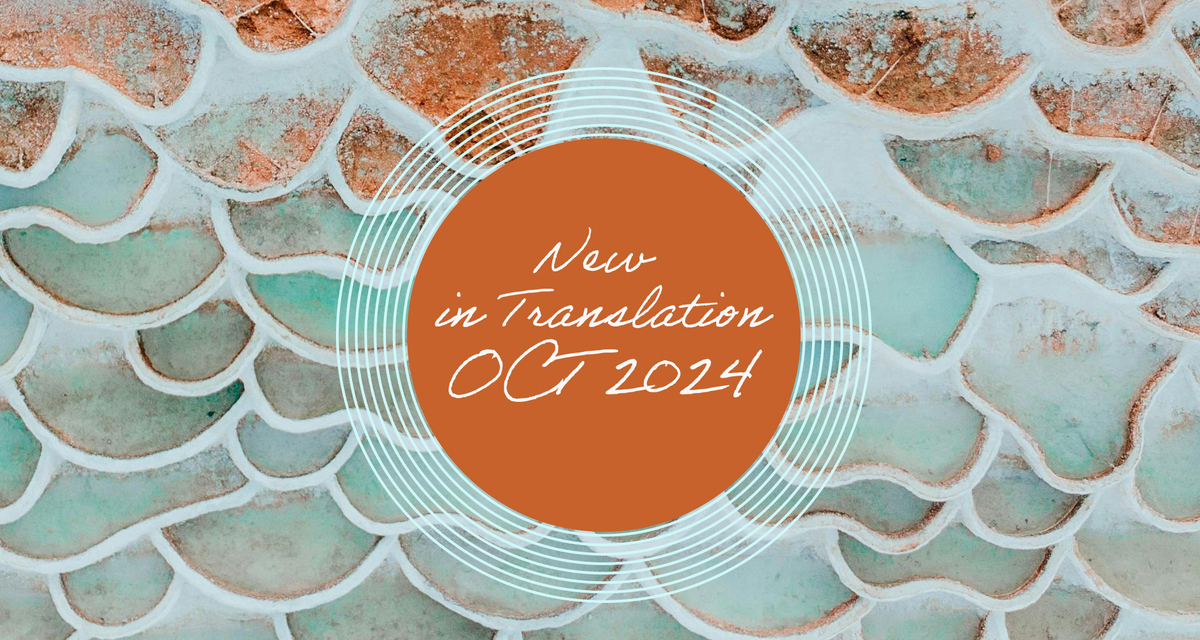In this month’s roundup of newly published translations, we introduce nine works from nine countries: Turkey, Germany, Brazil, Argentina, Cameroon, Sweden, Chile, France, and Cuba. From a politically tuned memoir embedded with a familial conscience to a series of poems that consider diasporic experience through the lens of spectatorship—read on to find out more!
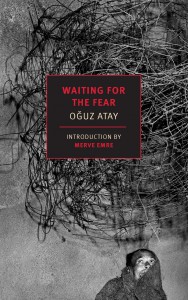
Waiting for the Fear by Oğuz Atay, translated from the Turkish by Ralph Hubbell, New York Review Books, 2024
Review by Christopher Higgs
The oft quoted line from Jean-Paul Sartre’s No Exit, “Hell is other people,” reverberates conceptually across Oğuz Atay’s Waiting For The Fear like a heavy skipping stone slumping across the surface of dark waters. Yet, in each of the collection’s eight stories, a confounding tension arises between the book’s Sartrean misanthropy and another seemingly competing desire: a strong craving to communicate, a yearning to connect. While Atay’s characters avoid human contact, holding deep disdain and even loathing for other people, they still thrum with a surreal pulse, a quivering mixture of rage and sadness in which their hatred comingles with a cry of the heart; they are desperate to embrace, to be accepted, to be acknowledged and valued, to be seen and heard by others. Six of the eight stories, for example, are epistolary, while the others rely on letters as plot devices. When the concept of written communication isn’t foregrounded, the narratives still hinge on concepts of storytelling, connecting, and sharing.
Try as they might, however, the characters in Atay’s collection can’t seem to ever actually connect or communicate with others. In fact, both seem impossible. They go unseen, ignored, overlooked. They find solitude both in isolation and in crowds. They desire both distance and closeness. In the opening sentence of the book, we’re introduced to a societal outcast incapable of speech: “He stood there amidst the crowd: a penniless failure begging in front of a mosque.” And in the opening sentence of the final story, Atay describes a small group whose identity centers on telling tales without an audience: “We were three storytellers living at a train station in a remote frontier town far from the country’s biggest cities.” This paradox of alienation and interdependence pushes and pulls and propels each narrative, connecting them to form a throbbing ember of a book.
Haunted by sorrow, despair, longing, living as though the end has already happened and therefore nothing really matters, the book creates an ache so deep and profound it shatters one’s heart and pieces it back together, again and again.
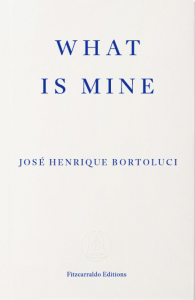
What Is Mine by José Henrique Bortoluci, translated from the Spanish by Rahul Bery, Fitzcarraldo Editions, 2024
Review by Ben Goldman
Sociologist José Henrique Bortoluci wrote What Is Mine “between two devastations”: his father’s cancer treatment during the coronavirus pandemic, and Brazil’s concurrent political upheaval. The resulting text openly refuses to be pinned down as biography, memoir, sociology, history, case study, or the equivalent; in a manner of speaking, it is all of the above, while retaining its focus on Bortoluci’s former truck driver father, his illness, and his life of lonely, continent-spanning labor. The central challenge Bortoluci sets for himself is how to enter his father’s subjectivity without over-relying on the very academic training that both allows him to see his father’s life in its sociohistorical context and guarantees his distance from it; how to speak to this context without devaluing his father’s agency in his own story; and how to bear witness without veering into ventriloquy or hagiography.
His solution is stereoscopic. Ever aware of his own status as a “traveler between social classes,” as well as his father’s lifelong entanglement in a national reality Bertolucci abhors—the debasement of Brazil’s natural riches by way of its ever-spreading highways, the related abuse of its indigenous population, the nation’s “inexhaustible plans for greatness”—he never forgets that he is speaking to another person’s experience, and that his subject belongs to a milieu hardly glanced at by cultural elites. This awareness motivates the book’s careful, interwoven chapters in which family and national history, social analysis and paternal testimony, come streaked with touches of theory and literary allusion. Among others, Bortoluci cites the work of Annie Ernaux, Didier Eribon, Walter Benjamin, Susan Sontag, and Philip Roth.
So imbricated, What is Mine, sinuously translated by Rahul Bery, crystallizes into a beautiful, multi-layered relic of love—one especially poignant as the body of Bortoluci’s father is treated by doctors as an array of malfunctioning bits and pieces. On its last page, the book offers a final stab at encompassing its hero: a shirtless photo of the old survivor standing at a window. It is a testament to the quietly profound effect of this book that the scar traversing his chest serves as the final, gentle punctuation mark of its spell.
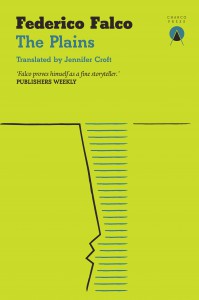
The Plains by Federico Falco, translated from the Spanish by Jennifer Croft, Charco Press, 2024
Review by Ben Goldman
At its best, The Plains is awash with a kind of fragmented, undulating delicacy. Federico Falco’s writing—thanks to translator Jennifer Croft’s careful rendering—is even-toned and rhythmically balanced, tracing the tracks of a mind shaken by loss. After his first true love, Ciro, leaves him, the narrator retreats to a hamlet in the Argentinian pampas: “A place to pass the time, and to start over.” His is a story of self-imposed loneliness. “All I want now,” he claims, “is to watch the horizon, the plains, to stare into the distance, let the countryside inundate me, let the sky fill me up, not to think, so that what is happening inside me stops existing all the time.”
The Plains is a book of mourning, but it is not airless. The grief-stricken narrator has come to cultivate a garden and to jot in his notebooks, and from these notes springs this novel. His isolation is interrupted only by a couple of neighbors, his books, the misadventures of his chickens, the challenges of the shifting seasons, and his often-frustrated efforts to bring some sustenance—some life—out of the earth. Most importantly, his days are suffused by memories of Ciro and their dissolved love, a relationship that—appropriately for a book designed to hold no tightly woven plot or drama—is largely depicted through the emotional gauze that shrouds his heart.
In his garden, the earth, so much more spontaneous and unruly than our narrator can be, imposes its own order upon him even as he abortively tries to do the same, a struggle contrapuntally matched by his efforts to write against form and narrative. “How to narrate without story?” he asks. “Without order? Without trying to make it make sense?” Still, he finds himself ceaselessly cast back into narrative’s gravity: “The major energy that writing requires is that of ordering, that of telling the story, that of giving it an order and a structure, that of establishing its meaning.”
Who wins? For all its flowing sentences, its short, raw paragraphs (which can at certain moments veer into sentimentality), the book is not without form. Each chapter comprises a month in the life of our gardener. We start in wilting January, conclude in September. On this last month, our narrator speaks to the problems of endings, and puts into print “the last talk” he had with Ciro. But why now and not in April? Is it the pain of it all, or a yielding to novelistic form?
If writing “requires chaos, uncertainty, turmoil, [and] grows, like the chard at the top: messy and up,” one still suspects our narrator of the most necessary of writerly dishonesties: revision. There is a claim of “rapidly scribbling,” but rapidly scribbled book does not feel. Is he less confessional, more guarded, his words less organically constructed than he would like to admit to? “It is as though during mourning there cannot be narrative,” he muses. But both author and reader know that he is only kidding himself.
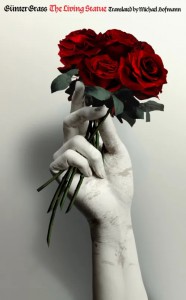
The Living Statue by Günter Grass, translated from the German by Michael Hofmann, New Directions, 2024
Review by Ben Goldman
“Nowadays,” opens the writer-narrator of Günter Grass’s The Living Statue, “the remains are museum pieces, hard as rock.” He is referring to the Berlin Wall, the vestiges of which are contained in vitrines the world over, serving as reminders of a divide that still haunts today, perhaps more urgently than ever. But notice the sly slippage here of that “nowadays”—before, it suggests, the Wall was not so solid. Indeed, limpidly translated by Michael Hoffmann, this novella is a story of stone become flesh, past become present, myth become reality—and a final explosion. “On paper,” our narrator winks, “you could do anything.”
The living statue of the title is Uta of Naumburg, the thirteenth-century figure who, in part due to her “Nordic” appearance, has been historically “subject to the most contradictory interpretations: secret romance, the expectation of salvation and, during the Nazi years, a lot of nationalist nonsense.” Here she first appears in her most enduring guise: as one of twelve donor statues gracing the Naumburg Cathedral.
Our West German narrator is on a reading tour in the GDR: “‘The other side is only the other side,’” he tells his audience, who seem not so interested in his book about rats and humans. Then, on his return, a first twinge of life: at his writing desk, imagined Uta—like anyone cut off from the West might—asks for a Coke. Later, greater magic strikes: one day, in Cologne, he encounters her as living flesh, busking for change. So commences an unrequited love story that spans Europe’s entrance into a new century.
Grass’s project, written with pleasing pops of irony (the Frankfurt Stock Exchange is called “a neuralgic site of weal and woe”) is a delightfully slippery go at archetypal subversion: a figure often pinned to the dominant credos of every era is not only a free agent, but inscrutable and shapeshifting. Yet is she not, as always, still subject to the pen that resurrects her? It is implied that the narrator is no one if not Grass himself (their wives share the name Ute), so when Uta commits a violence inspired by our own century’s competing ideologies, it makes sense that Grass implicates his fictional proxy. Though Uta might make her great escape by the novella’s end, she is ever Grass’s enigma to uncover.
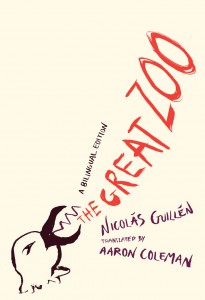
The Great Zoo: A Bilingual Edition by Nicolás Guillén, translated from the Spanish by Aaron Coleman, University of Chicago Press, 2024
Review by Jonathon Atkinson
“There are things / We live among,” George Oppen writes in his inexhaustible poem “Of Being Numerous,” “‘and to see them / Is to know ourselves.’” In this sense of spectatorship, one is made to think of zoos, which are at once colonialist institutions and sites—however compromised—for wondering at the sheer variety of the world.
The Afro-Cuban poet Nicolás Guillén structures this collection of poems as a day at the zoo—his capacious metaphor for rendering and re-interpreting Black diasporic experiences. Each poem is dedicated to one of this zoo’s “prized specimens.” In addition to beetles, a tiger, eagles, and monkeys, we encounter a gangster and the police, clouds and rivers, hunger and thirst. Also, halfway through, there appears a poem titled “LYNCH,” in which Guillén writes,
Lynch from Alabama. . .
Tends to appear
with a great cross in flames.
Feeds on Black people, ropes,
fire, blood, nails,
tar
This language is so unadorned, you can all but hear Guillén spitting the fricatives. And in situating the action within a cage, he reverses an ignominious hierarchy: the perpetrators are the animals.
Sometimes The Great Zoo is this direct in its condemnations; often, however, it’s less settled or stable. Zoos are dedicated to containment, but Guillén keeps suggesting that such restrictions are impossible. The specimens on display continually reveal new sides of themselves, mutating. Those rivers, for instance: initially, they’re serpents “coiled up on themselves,” but by the end of the first stanza, they’re like “the powerful springs / of gigantic trailer trucks.” Similar pileups of meaning occur throughout the book, as Guillén counters the logic of domination with what Jalal Toufic once called “manic theatricality.”
These poems are so forcefully acerbic that they evoke a suspension—not of belief, but of expectation. You can’t predict what will appear on the next page, because seemingly anything could. This is simultaneously sobering (nothing can escape this institution?) and thrilling. It’s as if Guillén could take us anywhere. Still, the book ends in something like resignation. “Here concludes our visit today,” the last poem begins. “Tomorrow’s another day / and we’ll return to the great zoo.”
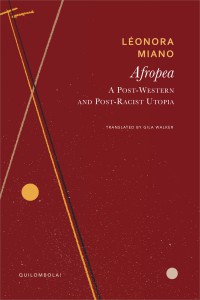
Afropea: A Post-Western and Post-Racist Utopia by Léonora Miano, translated from the French by Gila Walker, Seagull Books, 2024
Review by Matilda Nevin
Léonora Miano begins her non-fictional text, Afropea: A Post-Western and Post-Racist Utopia, with the assertion, “I am not an Afropean.” Where Afropean means “a person of sub-Saharan descent, born and raised in Europe”, the term “Afropea” offers Miano the means of articulating a utopic space in which identity is not defined by race—where Afropeans do not exist as mere “others,” seen through a reductive and hostile Western lens. In this space of solidarity and collaboration, Miano reconceives the term: “to call oneself Afropean is to work toward the renewal of the bond, to feel implicated in the destiny of all.”
Miano explains at the beginning of the book that she has only let herself be described as Afropean through “lassitude rather than laziness.” Her own relationship towards Europe—and France more specifically—“differs considerably” from Afropeans who “live . . . as a minority.” Born in Douala, Cameroon, Miano saw herself represented in public culture as a child, and in France, she was able to enjoy “the singularity” of her “profile.” Reading the initial chapters of Afropea, I wondered if Miano’s point of view could overwhelm the definitions of other individuals who identify as Afropean; Johnny Pitts, for example, embraces the term: “[It] encouraged me to think of myself as whole and unhyphenated.” However, Miano’s approach offers a means of rethinking the self beyond rigid and harmful categorizations: through culture, rather than race. The term cannot, she argues, be used to reinstate the “antagonism” between Europe and “beyond,” but instead must “dare . . . the alliance of terms”. To substantiate her ideas, she draws on sub-Saharan epistemologies such as Ubuntu, as well as pre-colonial understandings of concepts like minority sexualities. For Miano, literature and art offer a place where this daring alliance can begin; fiction, she writes, can reveal “unknown destinies.” Of course, this idea remains utopic, a possibility rather than actualization; neither publisher nor audience were ready for the author’s articulation of Afropea in her 2010 novel, Blues pour Élise.
In “bringing new terms into the conversation,” Miano’s writing, both non-fictional and fictional, strives towards a new language,” one influenced by writers such as Toni Morrison. Well-structured, concise, and accessible—written in part for Miano’s young daughter—Walker’s translation captures the precision and sharpness of Miano’s language and thinking.
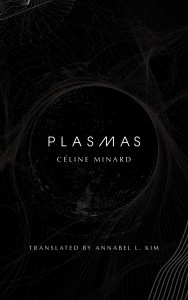
Plasmas by Céline Minard, translated from the French by Annabel L. Kim, Deep Vellum, 2024
Review by Jonathon Atkinson
The world of Plasmas—which is Earth, I think—is densely populated, although I say this on the basis of inference as much as observation. Reading the text, I sometimes felt as if I were watching the depicted events through a keyhole. I was constantly aware of what I couldn’t see—what Céline Minard wasn’t telling me. This is deliberate. These stories take place in the distant future, and although Minard never spells out exactly what has occurred, various allusions—to the air quality, “the world left by the great fires”—suggest that we’re on the other side of something like the ecologically wrecked future of The Uninhabitable Earth.
Minard writes in precise, detailed sentences that evoke the thick descriptions of an anthropologist—just one of her affinities with Ursula Le Guin, who provides the book with its epigraph. The stories in Plasmas are all relatively short, and although they occur within the same global context, the connections between the characters and their situations are not immediately clear. At first glance, Minard seems to favor the suspended moment over dynamism, but the stories are animated by change; they’re just more concerned with processes of adaptation than with conventional narrative.
In “Great Apes,” for instance, a woman named Duane works at assimilating into a society of primates. “Through paying attention to others,” Minard writes:
to their slightest gesture, postural choices, vocal manifestations, through imitation, indirectly, [Duane] had dug into her muscles and genes, into the loam of a very old memory. She had found there a knowledge that was a practice, she had found that all knowledge can only be a practice.
Over and over, Minard’s characters make what she calls “the decision to evolve.” They exercise some agency in adaptation; they select it for themselves, even if the circumstances they inhabit are not of their own choosing.
“I think hard times are coming,” Le Guin famously said, “when we will be wanting the voices of writers who can see alternatives to how we live now and can see through our fear-stricken society and its obsessive technologies, to other ways of being.” Plasmas is a fascinating, bewildering attempt to imagine not only our imminent disasters, but also their aftermaths.
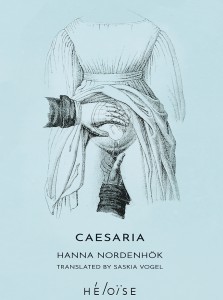
Caesaria by Hanna Nordenhök, translated from the Swedish by Saskia Vogel, Héloïse Press, 2024
Review by Matilda Nevin
In Hanna Nordenhök’s Caesaria, translated by Saskia Vogel, a doctor performs one of the very first “successful” caesareans in 1800s Sweden, and, in doing so, leaves a baby without a mother. Naming her after the birthing procedure, the doctor steals the child away to a house in the country, where she is raised by the housekeeper and a series of maids who appear and disappear. Caesaria is a symbol of both the doctor’s success and something darker and unspoken—something like guilt (the doctor repeatedly asks her to “forgive” him)—but beyond being representation or ghost, she is the narrator of the novel: a child who builds a world through her acute assessments of danger.
Dread and claustrophobia pervade Nordenhök’s prose; despite the wilderness of the landscape, the countryside remains in the dark shadow of a haunted house. Nature is described in exquisite detail, with special attention given to the quality of light and movement of clouds: “Cloud-streak. Wind shaking the linden crowns. Flower-burst”. Vogel’s choice to translate the Swedish into neologisms renders the landscape as both strange and beautiful, adding a lightness to an otherwise oppressively heavy text.
Though nature may offer fleeting moments of relief for Caesaria or the hope of escape, we are situated in a postlapsarian landscape from the first page, where the memory of those moments has been overwritten with the inevitability of failure. Escape is impossible. The pond transforms into a watchful conspirator to trap her (a “liquid pupil”), and the clouds remind her of the doctor and his friend Master Valdemar: “How they recede and then merge, until the one can’t be distinguished from the other.” Watched at every turn, Caesaria learns her own forms of observance, noticing where the master’s gaze lands and training herself to ignore the howls that split the air at night, to not see the doctor’s complicity in his friend’s abuses.
In this novel that reads like a fusion of Frankenstein and contemporary feminist horror, in the way of Samanta Schweblin or Johanne Lykke Holm, Nordenhök pits a twelve-year old girl armed only with her imagination against a corrupt system, depicting a David and Goliath-like struggle that she can only lose.
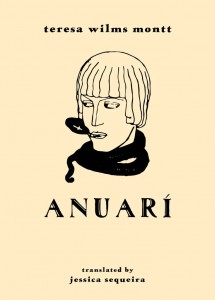
Anuarí by Teresa Wilms Montt, translated from the Spanish by Jessica Sequeira, Snuggly Books, 2024
Review by Matilda Nevin
Originally published in 1918 in Spanish, Snuggly Book’s edition of Anuarí by Chilean poet Teresa Wilms Montt is the first to appear in English, as translated by Jessica Sequeira. In the collection, a series of prose poems take the form of an address to Anuarí, a lost lover who killed himself in the speaker’s presence. Here, Anuarí is no longer anything resembling human but a strange creature—a “profound spirit” who speaks not only across an abyss, but seemingly through the poet herself. She channels this voice, and this access to the beyond reinforces her own sense of entrapment: “Oh life! What a small circle you have given me, where the entirety of my creative force cannot be unleashed.” It also affords her dreamlike visions of startling, surreal landscapes, outside of this “small circle.”
Yet the speaker runs the risk of voiding her own personhood by inviting these voices in—which finally reveal themselves as inaccessible. In certain instances, the subject “I” completely disappears, replaced by an incessant address to “you” or an unknown “she.” Often, no human subject appears at all, only “the hollow gnashing of teeth in an empty skull.”
Though written to describe a lover, the blazon in these poems only catalogues the self’s disintegration in grief: “My stiff feet suffer . . . My arms collapse over the cold amphoras of my hips, like snuffed-out altar candles at a funeral.” We are plunged, with the speaker, into a deadly cold world where even lust transforms into “teeth chattering,” and through which sound rings as pain: “the ice pick of a toothless laugh,” a voice “cold as a stab into a rock.” In the translator’s note, Sequeira writes, “sound and music are linked to the world beyond this one, and to the elevation of the spirit,” but this description seems optimistic. The speaker describes her own song as a “catastrophic serenade,” full of horror. Poison, skulls, toads, birds of prey, reptiles, the abyss, statues, and stones mark a vivid topology of pain. The rigidity of form attempts to contain the frenzied chaos as language strains at its bounds, resulting in a translation which conveys both the strangeness and bizarre clarity of Wilms Montt’s poetry.
Jonathon Atkinson teaches in the Language and Thinking Program at Bard College and mentors with the Minnesota Prison Writing Workshop. He lives in Petaluma, California.
Ben Goldman is a writer based in Belgium. His work can be found in Washington Square Review, Sonora Review, and Words Without Borders.
Christopher Higgs lives in Los Angeles. He teaches narrative theory and technique at California State University Northridge, and he still loves his first novel, The Complete Works of Marvin K. Mooney (2010, Sator Press/Two Dollar Radio).
Matilda Nevin is a writer and researcher based in Scotland. She has had fiction and poetry published in Dear Damsels, Banshee Lit and Popshot Mag, reviews books regularly on instagram @thehungrybookreader, and is currently finishing her PhD in Comparative Literature.
*****
Read more on the Asymptote blog:

